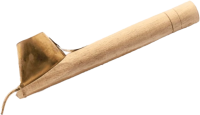
Behind every piece of kain lies a powerful story—a tale spun by the hands of women who breathe life into these vibrant fabrics. Each motif, color, and pattern is a testament to their skill, resilience, and creativity. These women are not just artisans; they are storytellers, cultural preservers, and change-makers shaping Indonesia’s rich textile heritage.
The Silent Strength of Women in Kain-making
In many villages across Indonesia, the art of creating kain is passed down from mother to daughter, an unbroken thread of tradition spanning generations. Women play a central role in this legacy, spending countless hours mastering intricate techniques like batik, weaving, and dyeing.
Take batik-making, for instance. The process demands precision and patience, as artisans carefully apply hot wax to fabric before dyeing it, creating detailed motifs. These women work tirelessly in humble workshops, their hands moving with the rhythm of tradition. They embody quiet strength, turning raw fabric into masterpieces imbued with meaning.
Yet, these women are more than creators—they are cultural ambassadors. Through their work, they preserve Indonesia’s diverse heritage, from the floral patterns of Pekalongan to the bold geometric designs of Bali’s endek. Their artistry bridges the past and present, ensuring that kain remains a vibrant part of modern Indonesian identity.
Empowering Communities, One Thread at a Time
The presence of women behind kain extends beyond artistry; it’s a story of empowerment. For many, kain-making is a source of livelihood, independence, and pride. In rural areas, cooperatives led by women have emerged as hubs of economic activity, providing income for families and lifting entire communities out of poverty.
Take the example of ibu-ibu pembatik (batik-making mothers) in Yogyakarta. Through their craft, they have not only preserved batik traditions but also gained financial stability, enabling them to send their children to school and improve their quality of life. These women have proven that traditional arts can be a powerful tool for social change.
Moreover, kain has become a platform for women to express themselves. Patterns and motifs often reflect their personal stories, emotions, and aspirations. A single piece of kain can speak volumes about a woman’s identity, her role in society, and her dreams for the future.
The Global Stage: Women Redefining Kain in Fashion
The role of women in kain-making doesn’t end at the workshop. Many female designers and entrepreneurs are redefining how the world sees Indonesian textiles. By blending traditional techniques with modern aesthetics, they’ve brought kain to global fashion runways, proving that heritage can be both timeless and trendy.
This global recognition empowers female artisans back home. As demand for kain grows internationally, women are reclaiming their roles as cultural custodians and entrepreneurs. They’re stepping into leadership positions, advocating for fair wages, and ensuring that the art of kain-making continues to thrive.
Kain is more than a fabric—it is a canvas of resilience, creativity, and empowerment. At its heart are the women whose hands weave not just threads but the spirit of a nation.
